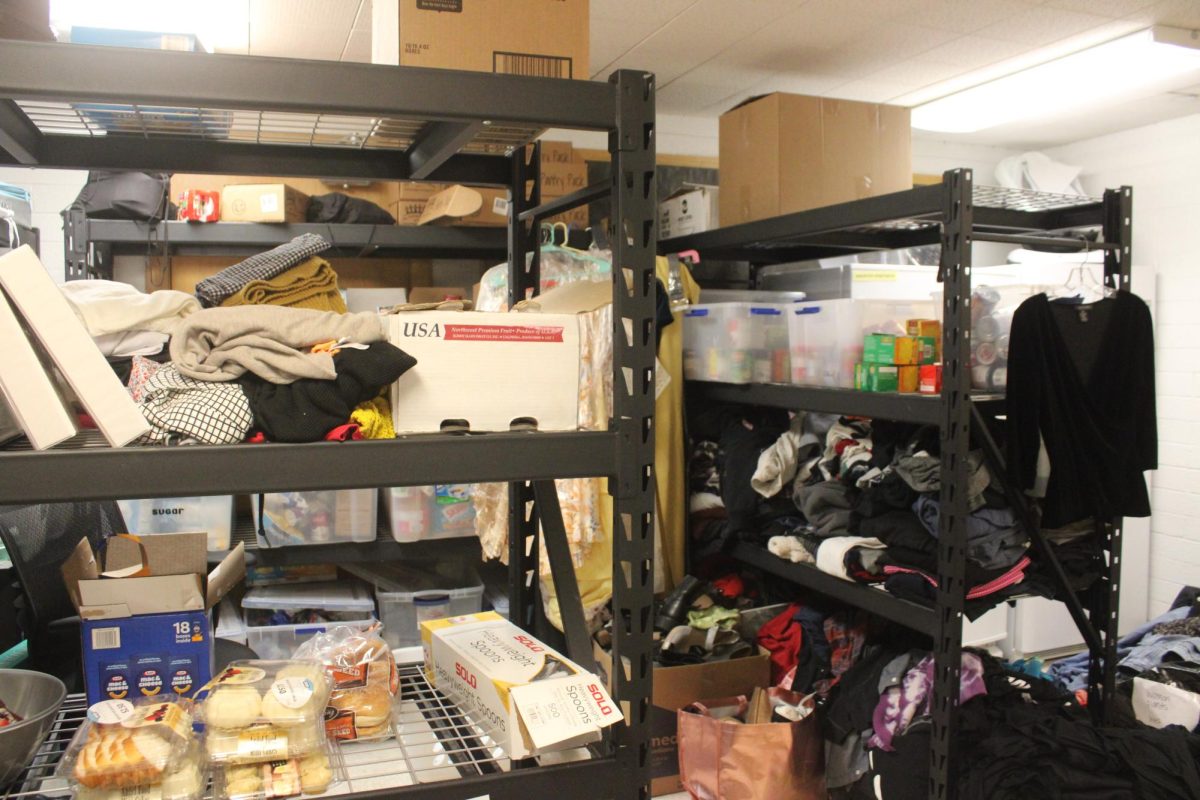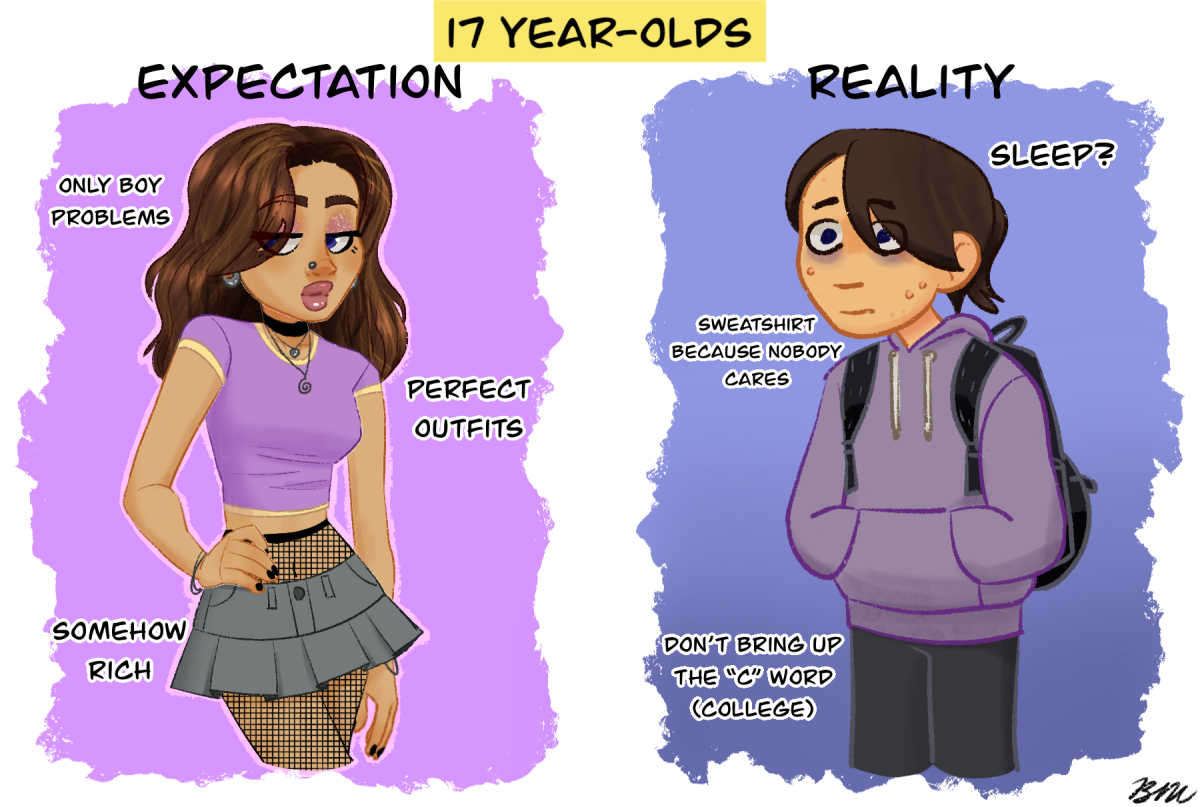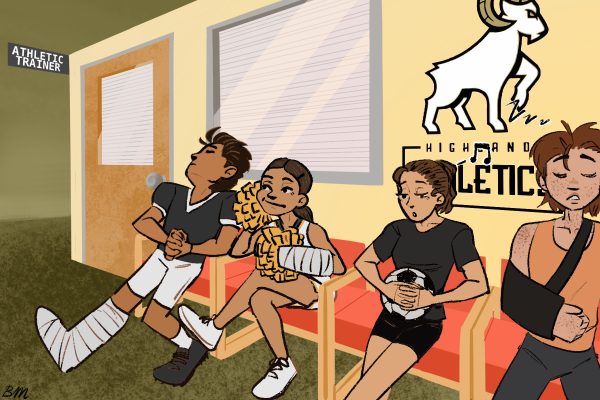Should Schools Allow Advertising?
This is what Highland would look like if ads ran rampant.
March 3, 2015
Education should remain pure and not backed by an intention. With corporations funding schools, the point of a school is not to teach, but to sell.
During the 1990s, for every vending machine that Kennedy Junior High, in West Valley City, Utah, supported, the school gained $600 in sponsorship. This corporate creed has for years been one of the major financial fallbacks for schools across the United States, in which funds are derived from allowing a company to advertise itself through the school.
“We do get a little kickback because of vending,” principal Chris Jenson said.
This kind of agreement that is so commonly drawn up between institutes of learning and corporations is otherwise known as the commercialization of schools. Although a surplus in funding may seem positive for schools, there are several aspects of the community, not only the school environment, that are altered when a school chooses to allow this type of advertising.
First off, the question about taxes is raised: what need is there of extra sponsorship if a primary financial resource has been set up? The second and last two items go hand in hand: schools are being misrepresented by corporations. By displaying a company’s logo, a school sacrifices its identity little by little. The students, as the school’s product, are themselves misrepresented also.
In her book, Born to Buy, Boston College professor Juliet Schor stated that “the main impetus for commercialization is the chronic underfunding of schools.” Schor taught at Harvard University with a PhD in economics. If schools are not prioritized where taxpayers’ money is concerned, they end up severely lacking; so much so that in order to be sustained, they must sell themselves. In terms of agreeing to be consumers of a product, schools in the US wear countless insignias of corporations such as Wal-Mart and McDonald’s. In turn for advertising companies such as these, schools gain funds. Here is where the line must be drawn: a school in need of some extra deposits is offered sponsorship by a large and influential corporation.
“If you look at how much money is divided between all of the schools in the district, you’re talking about many millions of dollars. From corporate sponsors, that’s a limited amount; that’s several thousand versus many million. We’re subsidized and supported,” Jenson said on corporate funding at Highland.
When a school accepts funding, it is obliged to not only advertise the company’s logo, but become a consumer of that company’s product. Considering that schools did not originate from the status of corporation, why should they be furthered by, or have a hand in furthering, corporations? The only need, Schor proposed, for the commercialization of schools is to gain funds. On the side of education, this remains as said, but from the view held by large companies and corporations, the schools could provide one more outlet to flush their products into. The schools buy into this, of course, because they need the money.
It is unfortunate that taxes are not enough to sustain what taxes were intended for. It is even more unfortunate that what is happening within these schools because of commercialization flies over the heads of many administrators, because what the schools may see as a favor, companies approach as an advantage. What better audience to be represented by and in turn represent, major corporations than America’s school-aged youth?
“We’ve always been on the bottom for the least funded per pupil spending in the nation,” Jenson said. “Taxes can be raised, but the populous has to vote for it. There’s a large contingency, anything but raising taxes, because the belief is that the more money people keep on their paychecks, the more it will stimulate the economy.”
“We have a lot of corporate sponsors. You’ll have to go out on our 21st South fence to see our donors,” Jenson said.
Here at Highland, we can find many examples that the insufficiency of taxes brings us closer to commercialization. McDonald’s is a sponsor of Highland High Band, with Chick-Fil-A a runner up. This may seem harmless enough, but what about the influence of these companies over the students? The problem with submitting to the money offered by companies is the sacrifice that must take place. Corporations interfere with schools by advertising through them. The school environment is then altered to fit the mold of what the company projects, because the school has become itself a consumer of the product it advertises.
Already being sponsored by Chick-Fil-A, propositions were made to serve their food in the cafeteria at Highland High, which would affect the health of students. And those vending machines that line the halls with no doubt contribute to the same issue. Principal Jenson illustrated the precautions taken at Highland where food is concerned.
“Vending has decreased a lot because of nutrition requirements for food and vending machines. Actually, the vending machines in the commons area are run by a private entity; they used to be partnered with food services but they’re not anymore. If it’s done during a regular school day, it has to fit the dietary guidelines established by food services and the state of Utah. Unless they alter their menu so that it fit those dietary guidelines, they can’t serve what they normally would serve at the fast food restaurant,” Jenson said.
According to the Center on Budget and Policy Priorities, 25 percent of taxpayers’ money goes towards schools K-12, and only 13 percent towards higher education. If it is necessary for protocols like Wal-Mart’s Community Grant Program to contribute, we might want to think about giving more towards our education through taxes.
Principal Jenson believes that there is importance in preserving the Highland way. By letting corporations into the halls of our school, we would much less be the Highland Rams than the cultivated consumers of products.
“We wouldn’t advertise businesses inside the school,” Jenson said. “We advertise our in-school things, we advertise our clubs, and we want to keep it so that we have less commercialization within the school and more about Highland. We’re the Rams, and it’s the Highland way; all of those messages are really important to display, and I think that if we went commercial inside, we would limit our opportunities to get our own message across.”
Instead of globalizing school-wide traditions by replacing them with those of companies, schools must monitor the amount of advertising they let into the school environment. The issue lies in a company’s influence over the students, and not only in the sense of eradicating a school’s or student’s individuality.
“We have a lot of our own identity that I don’t want to get drowned in a sea of commercialization,” Jenson said.
There exist countless reasons as to why corporations should be moderated in schools, for as soon as the Golden Arches replace a school’s logo, the school is no longer an institute of learning… but a link in the chain.






































